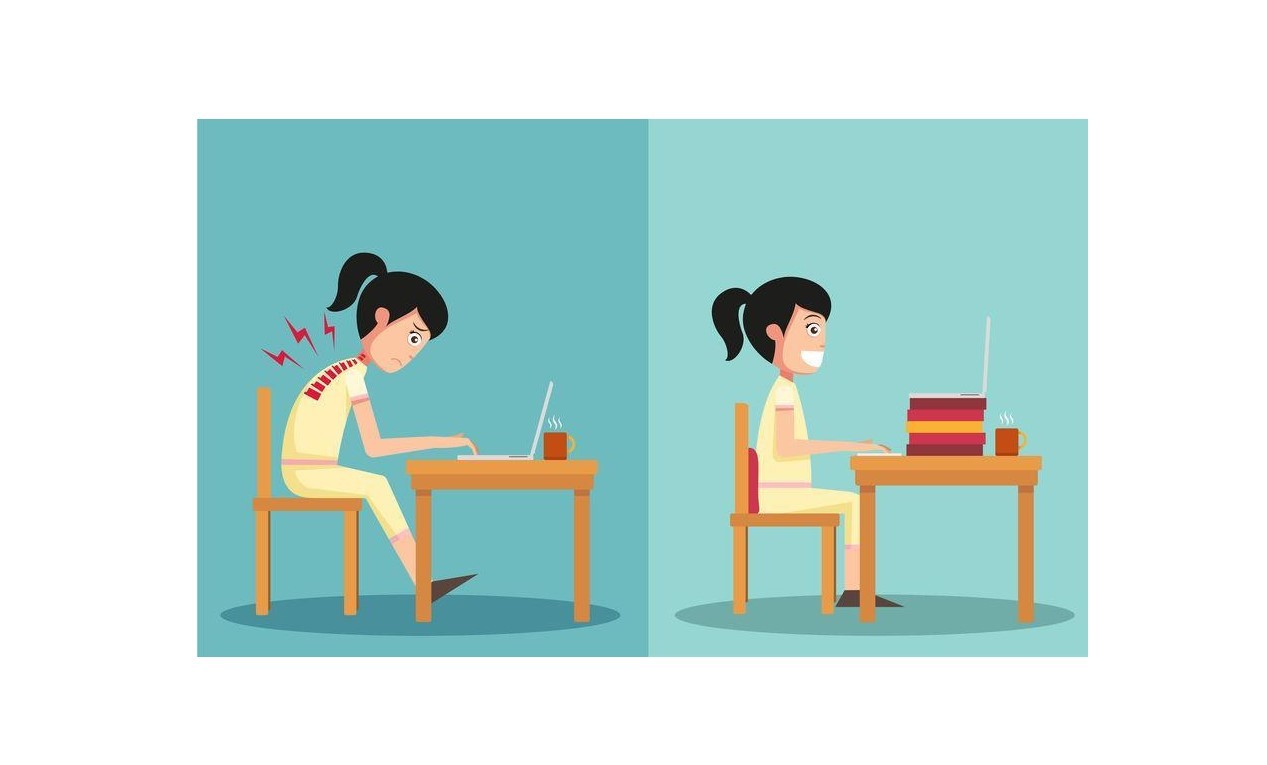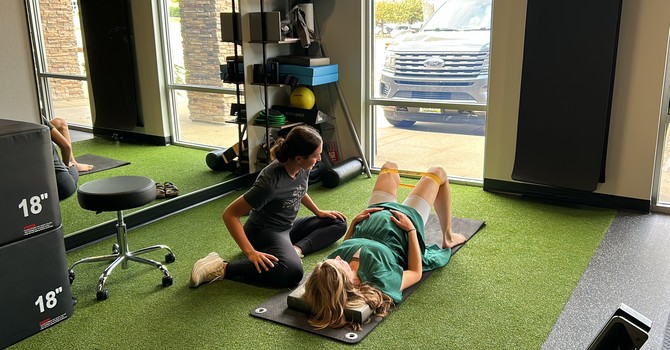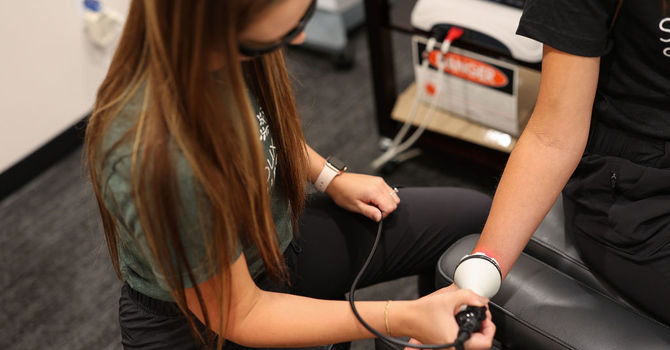COVID-19 has changed the lives of many including where they work. Many employers are having their employees telecommute, working remotely from home on a regular basis since the pandemic began. This has lead to several ergonomic issues as they’ve gone from their regular desk and monitor set up at work to possibly working at their kitchen tables or couches. Proper ergonomics should not be exclusive to an office and should extend to wherever you work from, whether it be your living room or kitchen. Most of the concepts on proper ergonomics can be applied to any workplace. However, there are some important things to consider when working from your home.

It s important to consider that working from the comforts of your home is not always comfortable. We spend lots of time going over workstation ergonomics with our patients. It’s more important now than ever before as we all adjust to the changes that COVID-19 has brought upon us. Neck and back pain are very common in people that work at a desk and are very preventable!

When we ask our patients that work from home to describe their workstation setup, very few tell us that they have a separate home office with a desk. A more typical reply is that they’re slouched over a laptop on their couch or at the kitchen table. We’ve even had patients tell us they work on their laptop while lying in bed. Laptop use can lead to an array of both immediate and long-term injuries. Thus, perhaps the most important tip we can offer when working from home is to have a designated workstation with a comfortable office chair. While this would preferably be a height adjustable desk, not everyone has space or budget to have a freestanding desk in their home. If that is the case, then set up your workstation on a stable flat surface such as a kitchen/dining table or a countertop.
It is also important to have an adjustable office chair to get the proper body positioning and height when sitting, especially if you’re using a surface that is not height adjustable. Unfortunately, certain ergonomic features are compromised for the sake of portability. Keyboard spacing, screen size and positioning, and pointing devices are all poorly designed when it comes to laptop computers. Furthermore, it is nearly impossible to have good posture when using a keyboard fixed to the laptop.
The laptop is always a challenge when trying to sit ideally when working. The challenge lies in the fact that the keyboard and monitor are attached to each other, so it is difficult to maintain proper ergonomics. The first challenge is that the screen tends to be lower than a traditional monitor and you have to look down on your screen. When working on a computer frequently you need to maintain the monitor level, so your eyes are in line with the top portion of the monitor while maintaining proper posture.

Secondly, as laptops tend to be getting smaller and smaller, the keyboard gets smaller as well and is not ideal for typing, and can place undue strain on the hands, wrists, and forearms. Lastly, people tend to want to keep a normal distance from their eyes to the laptop screen, so they sit a certain distance away from the laptop, but then need to reach for the keyboard to type. This causes the reaching position of the arms and shoulders that inherently forces you into a rounded sitting posture and excessive stress on the upper body and neck. Sitting in this position for hours at a time can cause the muscles to have a constant strain which can restrict the vertebra and cause myofascial adhesions to form due to lack of fresh blood and oxygen getting to the muscles due to lack of relaxation.
Despite the poor ergonomics inherent to laptops, there are certain steps you can take to improve your ergonomics when using a laptop.
- If your laptop is your main computer, use a keyboard that you link to your laptop instead of the laptop’s keyboard.
- Place a stand underneath the laptop so that the screen/monitor is at the optimal height that aligns with your eyes.
- If the laptop is your secondary computer, use a stand for the laptop so that you don’t have to look downward to see the screen. Then when you need to type on it briefly, move the laptop to an optimal place in front of you to type.
- Make sure your elbows are as close to 90 degrees as possible while typing.
- Stretch every 60 minutes if possible
If you're in pain while working from home, chiropractic care may be an option to get you feeling better quicker after adjusting your workstation ergonomics. Chiropractic adjustments may increase intersegmental range of motion in the vertebra which can subsequently decrease pain, improve range of motion, and decrease muscle tension. Along with chiropractic adjustments additional therapies such as Active Release Techniques, therapeutic exercises/stretches, and passive therapies such as interferential therapy or laser therapy may be beneficial in speeding up the healing process. Check out the YouTube video below of Dr. Tyler performing a desk stretch sequence that can help with common problem areas after being on your computer to long.
COVID-19 has recently changed how and where a lot of us work. Creating a better ergonomic home environment is easy if you follow the steps we have outlined above. Doing so will help improve productivity and the quality of your work, but will also help prevent stress and injury, improving the quality of your mind and body. Be sure to follow us on Facebook, Instagram, and YouTube for more great content!
Be safe and be well,
Dr. Tyler Armstrong
Resources:
Chiropractic Success Academy
The Desk Jockey Manifesto
∙http://www.goldtouch.com/setting-up-home-office-ergonomics/
∙http://batchbook.com/blog/10-ergonomic-tips-for-setting-up-your-home-workstation/
∙http://blogs.ergotron.com/blog/2010/10/06/the-secret-life-of-work-from-home-ergonomics/
∙https://www.thoughtco.com/set-up-laptop-as-a-desktop-1206662
∙http://www.dehs.umn.edu/ergo_office_laptop.htm
∙https://www.nytimes.com/2017/02/15/us/remote-workers-work-from-home.html
∙https://www.fastcompany.com/3061567/more-people-work-from-home-now-than-ever-before
∙https://www.marketplace.org/2016/07/21/business/working-home
∙http://www.pcmag.com/article2/0,2817,2496597,00.asp





